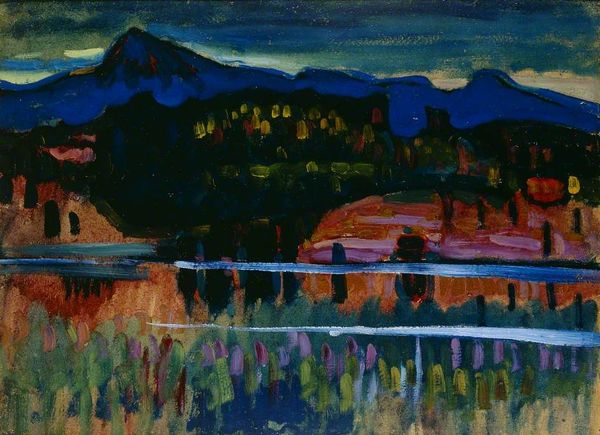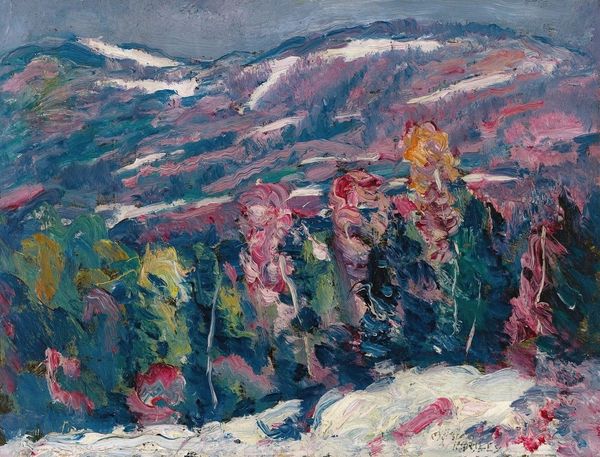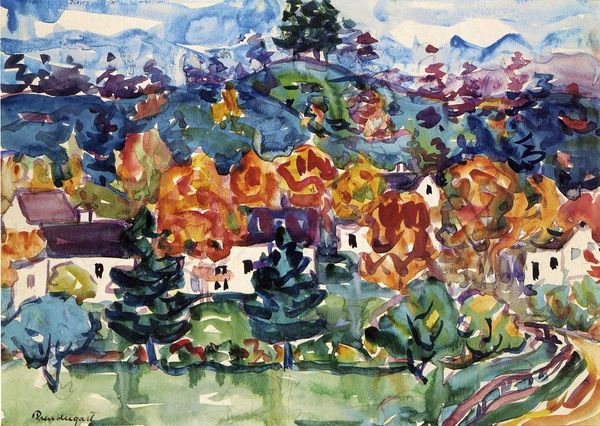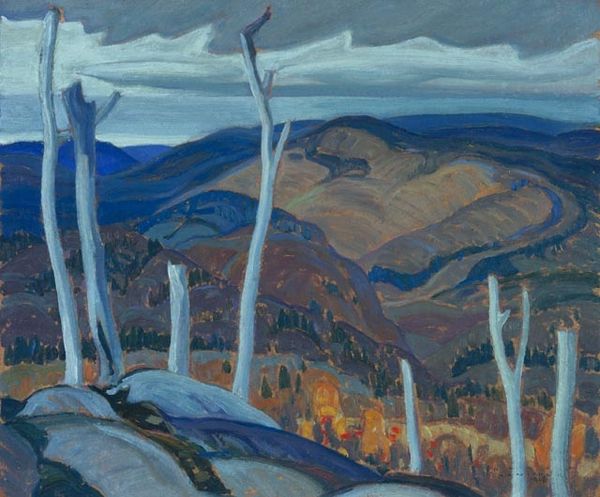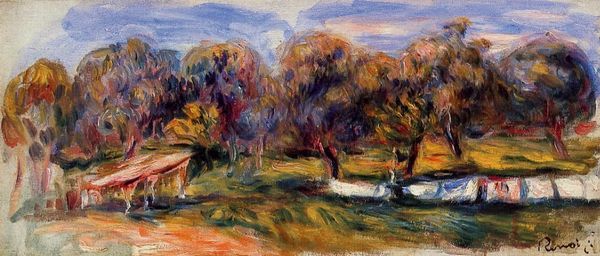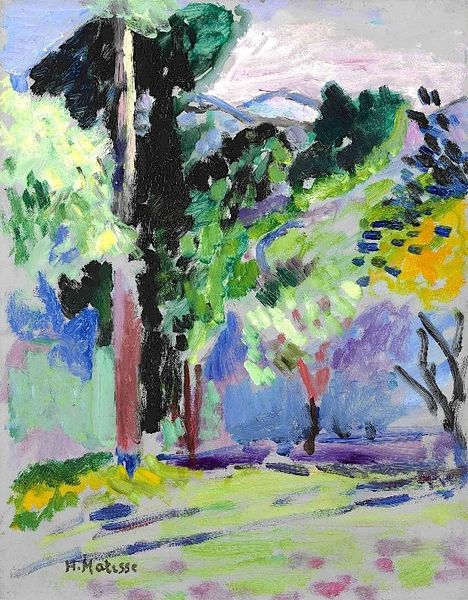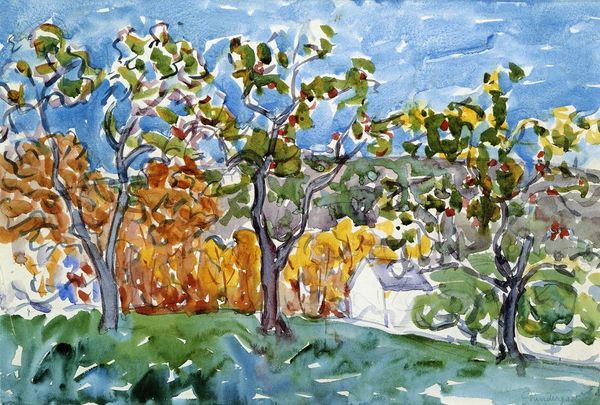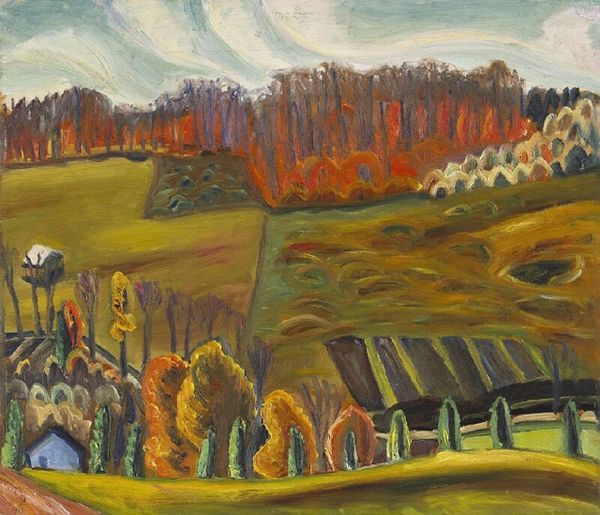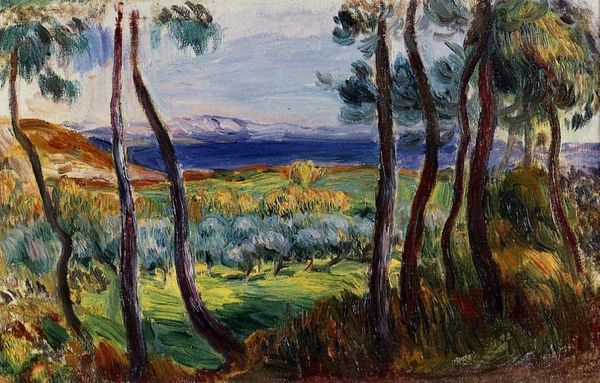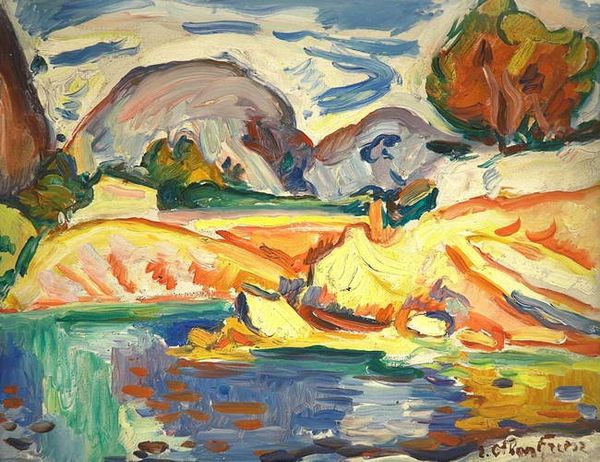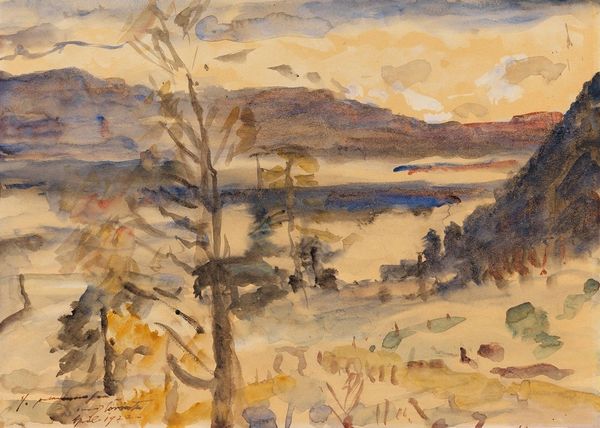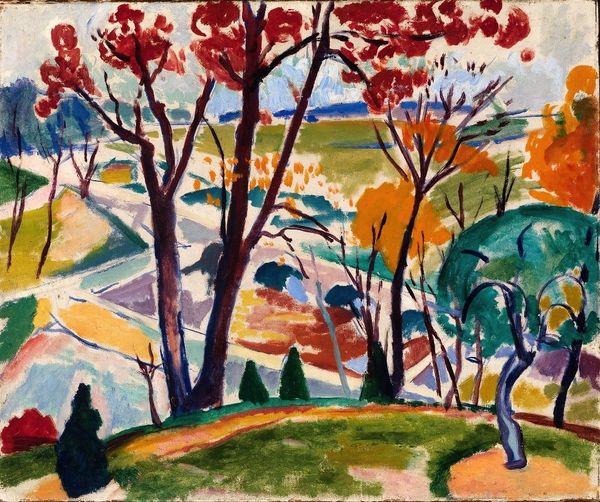
Dimensions: 25 x 35.24 cm
Copyright: Public domain
Curator: Welcome. We’re looking at Maurice Prendergast’s "Village Against Purple Mountain," a watercolor made in 1913. Editor: The first thing that strikes me is the sort of melancholic mood it sets, with those deep purples and browns. There's a definite tension between the dark mountain and the smattering of village buildings. Curator: Indeed. Prendergast's choice of watercolor is critical. It allowed for spontaneity and translucency, reflecting the Post-Impressionist and Fauvist tendencies that informed his process. This isn't about photographic representation. It’s about an individual’s perception rendered through visible brushstrokes. Editor: It's also interesting to situate this work within early 20th-century American art. There was a pull towards both European modernism and uniquely American themes. Prendergast, drawing from his travels abroad and his observation of urban life in the U.S., navigates both. Curator: Precisely. Consider the social context. During this period, there's a rapid industrialization coupled with a back-to-nature movement. Does this landscape portray nostalgia for an imagined past, a sort of resistance to a rapidly changing reality? Or, rather, an active reshaping of nature with bold brushstrokes of unnatural colors? Editor: The color palette adds another layer. The so-called "purple mountain" isn’t traditionally rendered. This bold deviation invites us to challenge the conventions of landscape art. Is Prendergast perhaps gesturing toward themes of disruption and transformation on the cusp of a world war? Curator: Perhaps he understood that labor conditions and class hierarchies influenced what sort of idyllic or melancholic scenery was painted—a critique echoed in contemporary landscape painting with explicit eco-political messaging. The labor that enables this scenery is missing from the landscape; we cannot disconnect from it. Editor: Thinking about that now changes how I view the composition—instead of seeing the village nestled "against" the mountain, I wonder whether Prendergast implies a tension in terms of access to resources or power within this landscape. It feels less and less serene. Curator: Reflecting upon the material properties and the means of Prendergast's production, the handmade quality of the watercolor and the brushstrokes makes that kind of emotional and political rawness and tension present. It becomes evident in how we perceive both the environment depicted and the environment in which he makes art. Editor: Thanks. I definitely won’t see it the same way now! It felt at first glance picturesque but the texture, materials, and palette give this quiet scene an urgent voice.
Comments
No comments
Be the first to comment and join the conversation on the ultimate creative platform.
